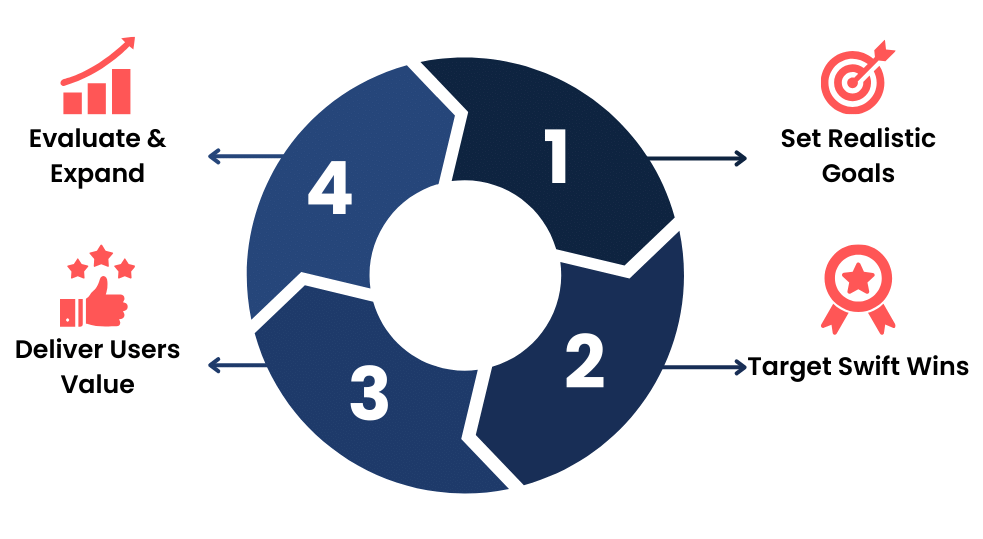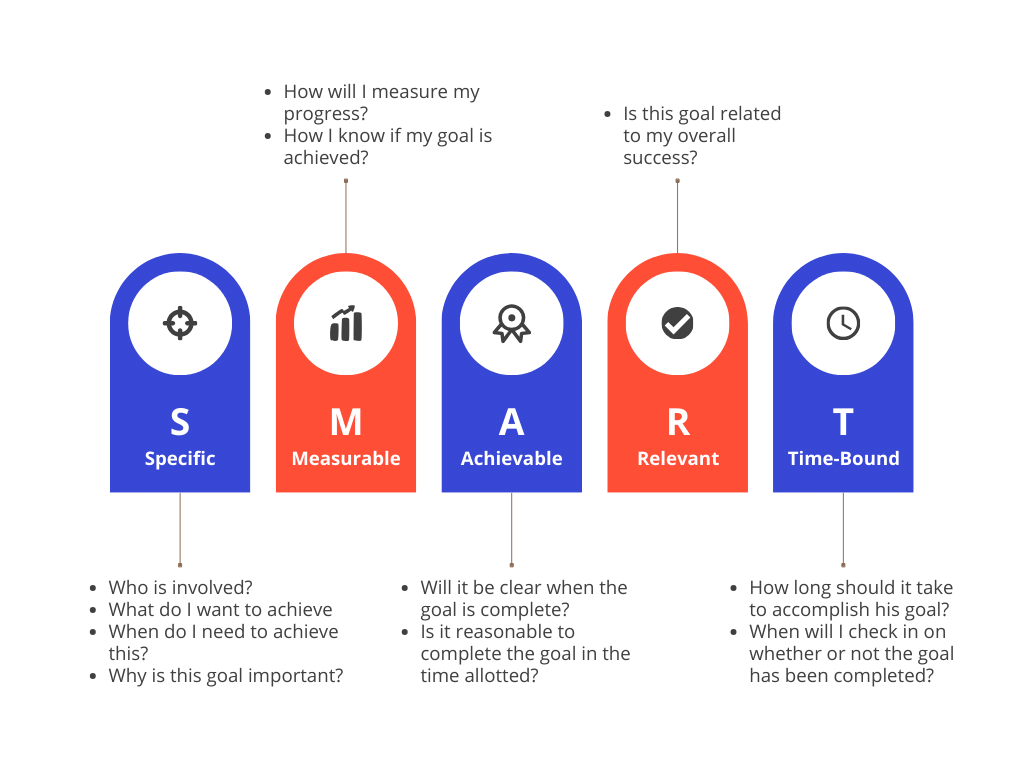
How do successful businesses maintain momentum in their growth while navigating the complexities of an ever-evolving market? The answer lies in their strategies and approach to crafting and implementing them. This blog post unveils the core elements of a Growth Strategy Framework that have powered countless businesses toward scalable success. By the end, you’ll be equipped with actionable insights and a clear understanding of building a growth strategy that aligns with your business goals and resonates with your target audience, ensuring sustainable growth in the competitive digital era.
The Importance of a Strategic Approach to Growth
Achieving Long-Term Success
A strategic approach to growth transcends short-term gains, focusing on establishing a sturdy foundation that ensures longevity and stability. It’s about setting an ambitious and attainable vision, ensuring every step taken is a step toward enduring success.
Maximizing Business Performance
By adopting a strategic growth plan, businesses can optimize their operations, streamline processes, and enhance productivity, ensuring that every resource is utilized towards achieving maximum performance.
Ensuring Sustainable Growth
Sustainability is key in today’s business world. A strategic growth plan emphasizes financial gains and the importance of eco-friendly practices, social responsibility, and ethical business conduct, ensuring a positive impact on the community and the environment.
Leadership and Team Buy-In
For any strategy to be effective, it’s crucial to have the buy-in from both leadership and the team. This means aligning the growth strategy with the company’s core values and culture, ensuring everyone is on board and moving in the same direction.
The Swift Growth Strategy Framework

1. Setting the Foundation with Realistic and Aligned Goals
In the growth journey, the first step is often the most critical. Setting realistic goals is akin to laying down the first brick in constructing a skyscraper. But how do you ensure that this foundation will not only hold but also propel your business upwards? The key lies in alignment—within your team or company objectives and with your target audience.
Understanding Your Audience
Before you can set any goals, you need a deep understanding of your audience. This goes beyond demographics and into psychographics—what drives them, their challenges, and the solutions they seek. This understanding forms the bedrock of goal setting, ensuring your growth objectives resonate with the people you aim to serve.
Goal Alignment
Once you have a clear picture of your audience, the next step is to align your goals with their needs and desires. This alignment ensures that every objective you set is a step towards solving your audience’s problems, fulfilling their needs, or enhancing their lives meaningfully. It’s about creating a symbiotic relationship where your business growth directly contributes to the value received by your audience.
Setting SMART Goals

With your audience in mind, your goals must be Specific, Measurable, Achievable, Relevant, and Time-bound (SMART). This framework ensures that your goals are clear and actionable, with a defined timeline for achievement, making it easier to track progress and adjust as needed.
Example of Aligned Goal Setting
Suppose your target audience is small business owners looking to enhance their online presence. A SMART goal aligned with this audience could be, “Increase our content marketing output to publish four in-depth guides on small business SEO practices by Q2, resulting in a 20% increase in our website’s traffic from small business owners.”
Setting goals that are deeply intertwined with your audience’s needs and measuring your success against your deliver value lays a strong foundation for sustainable growth. This approach ensures that your business becomes increasingly indispensable to your customers as your business scales.
2. Identifying and Targeting Swift Wins
In the realm of growth, momentum is everything. While long-term goals provide direction, the swift, tangible wins keep the energy high and demonstrate progress. These quick victories boost team morale and offer your business valuable insights and immediate benefits. But how do you identify and capitalize on these opportunities?
Data-Driven Decisions
The heart of targeting swift wins lies in your data. Analyzing customer behavior, market trends, and your own business analytics can reveal low-hanging fruits—opportunities that require minimal effort but promise substantial returns. This could be anything from optimizing a high-traffic web page to improve conversions to leveraging a trending topic on social media for increased engagement.
Agile Implementation
Once an opportunity is identified, agility in execution is key. Swift wins require rapid action and a willingness to experiment. This might mean setting up a short-term campaign, quickly developing a new feature based on user feedback, or capitalizing on a seasonal market trend.
Feedback Loops
Every swift win provides a learning opportunity. Establishing feedback loops to analyze the outcome of these quick initiatives is crucial. What worked, what didn’t, and why? This information feeds back into your strategy, helping refine your approach and target even more effective wins in the future.
Example of Targeting Swift Wins
Imagine you run an e-commerce platform and notice that a particular product category is gaining traction on social media. A swift win could involve creating a targeted promotion for this category and a social media campaign to drive traffic and conversions. You capitalize on the trend by acting quickly, increasing sales and engagement.
By focusing on swift wins, you achieve short-term gains and build a culture of innovation and responsiveness within your team. This dynamic approach ensures your growth strategy remains flexible, adaptive, and aligned with the ever-changing market landscape.
3. Delivering Value to Your Audience

In today’s information-saturated world, content is not just king; it’s the currency of engagement in the digital marketplace. The key to standing out? Delivering content that not only informs but transforms your audience’s experience. But what makes content valuable, and how can it drive your audience to keep returning for more?
Understanding Audience Needs
The foundation of valuable content is a deep understanding of your audience’s needs and challenges. It’s about identifying the questions they’re asking and the problems they’re trying to solve. This insight lets you craft content directly addressing their concerns, making it inherently valuable.
Educational and Engaging Content
Valuable content educates your audience, giving them the knowledge and insights they need to make informed decisions. Whether it’s a how-to guide, an in-depth analysis, or a case study, your content should offer a mix of utility, relevance, and engagement.
Consistency and Quality
Consistency in publishing high-quality content is crucial. It’s not just about the frequency of your posts but maintaining a quality standard that your audience can always expect. This reliability builds trust and establishes your brand as a go-to resource in your industry.
Interactive Elements and Offers
Integrating interactive elements and exclusive offers into your content not only makes it more engaging but also adds tangible value, encouraging users to interact with your brand further. Whether it’s through interactive quizzes that personalize the user experience or downloadable guides that provide actionable insights, these features enrich your content, making it a valuable resource for your audience. Seamlessly blending these elements into your content marketing strategy can transform passive readers into active participants and loyal followers of your brand.
Feedback Loop and Continuous Improvement
Encourage your audience to share their feedback on your content and use this input to refine and improve your offerings. This iterative process ensures your content aligns with your audience’s evolving needs and interests.
Example of Delivering Value Through Content
Imagine running a blog for a health and wellness brand. By regularly publishing well-researched articles on nutrition, exercise tips, and mental health advice, complemented by interactive tools like meal planners or fitness challenges, you provide immense value to your audience. This helps them in their wellness journey and establishes your brand as a valuable ally in their pursuit of health.
By prioritizing creating valuable, helpful content, you satisfy your audience’s thirst for knowledge and foster a loyal community that looks to your brand for insights, inspiration, and solutions, driving sustainable growth through content marketing.
4. Evaluating and Expanding for Sustainable Growth
The true test of a growth strategy lies in its adaptability and resilience over time. Regularly evaluating your strategy against key performance indicators (KPIs) is crucial to understanding what’s working and what’s not. This iterative process allows you to refine your approach, making necessary adjustments to stay aligned with evolving market trends and customer preferences. Expanding your strategy involves scaling successful initiatives and exploring new avenues for growth, ensuring your business thrives in a dynamic environment. It’s about being proactive, seizing new opportunities, and constantly seeking improvement and innovation.
Consider a tech startup that launches a series of blog posts about innovative uses of AI in everyday life. By tracking increases in article views and social engagement following the series launch and noticing a spike in newsletter sign-ups (a valuable offer), the startup can gauge the effectiveness of its content in boosting brand awareness and engagement, guiding future content strategies.
Common KPIs for Growth Marketing Strategies often include:
- Website Traffic & Sources
- Engagement Rate (on social media and content)
- Conversion Rate
- Lead Generation Volume and Quality
- Customer Acquisition Cost (CAC)
- Customer Lifetime Value (CLTV)
- Retention Rate
- Revenue Growth Rate
- Churn Rate
- Net Promoter Score (NPS)
These KPIs help measure the effectiveness of growth marketing efforts across different channels and stages of the customer journey, providing insights into which strategies drive the most value and where optimizations can be made for better performance.
Other Popular Growth Marketing Frameworks
Exploring various growth marketing frameworks can provide insights into strategies for scalable success. Each framework offers a unique approach to tackling growth challenges:
- AARRR Framework: Guides businesses through Acquisition, Activation, Retention, Referral, and Revenue stages.
- Lean Startup Methodology: Emphasizes rapid iteration and validated learning for quick adaptation.
- Flywheel Model: Emphasizes the momentum of attracting, engaging, and delighting customers to drive growth.
- OKR (Objectives and Key Results) Framework: Used for setting ambitious goals and tracking their outcomes.
- Bullseye Framework: Helps identify and focus on the most effective marketing channels.
These frameworks can serve as blueprints for constructing a growth strategy tailored to your business’s goals and market context.
Implement a Growth Strategy Framework
Implementing a growth strategy framework is pivotal for businesses aiming to scale sustainably. This process involves a strategic blend of planning, execution, and continuous optimization. Initially, it requires a deep dive into the core objectives that drive your business forward and an insightful understanding of your target audience’s needs and behaviors. Choosing a framework that resonates with your business model is crucial, as it lays down the blueprint for your growth initiatives.
- Define Clear Objectives: Set specific, measurable, achievable, relevant, and time-bound (SMART) objectives that align with your long-term business vision.
- Understand Your Audience: Conduct thorough market research to gain deep insights into your target audience, including their preferences, pain points, and decision-making processes.
- Select the Right Framework: Choose a growth marketing framework that best suits your business needs, whether it’s AARRR, Lean Startup, OKR, or another methodology.
- Develop a Tactical Plan: Break down the selected framework into actionable tactics and strategies, outlining the steps needed to reach your objectives.
- Execute with Precision: Implement your strategies diligently, ensuring that every action is aligned with your overarching goals.
- Measure and Optimize: Regularly track your performance against the set KPIs, and use the insights gained to refine and adjust your strategies for improved outcomes.
After the initial implementation, fostering an environment of continuous learning and adaptation is essential. The digital landscape is ever-evolving, and so should your growth strategies. By staying agile and responsive to market changes and customer feedback, you can ensure that your growth strategy framework supports your current objectives and adapts to future challenges and opportunities.
The Agency Edge: Amplifying Your Growth Togher
Venturing into growth alone can feel overwhelming. However, the expertise of a growth marketing agency can be a game-changer. With a deep understanding of market trends and innovative strategies, these agencies have the power to turn your growth plans into tangible, impactful outcomes. Picture a partnership with a team that not only grasps the digital realm’s complexities but also shares your vision, driving your brand to new heights. Such collaboration could be the key to successfully managing scaling challenges in the modern, fast-paced market environment.
Benefits of working with a growth marketing agency include:
- Access to specialized expertise and insights
- Utilization of advanced tools and technologies
- Fresh, innovative perspectives on growth strategies
- Tailored, scalable solutions for your business needs
- Strategic support in navigating the digital marketing landscape
Conclusion
A robust growth strategy framework is essential for any business looking to scale effectively and sustainably. By understanding your audience, selecting the right frameworks, and leveraging the expertise of growth marketing agencies, you can set your brand on a path to success. Remember, the growth journey is continuous, requiring adaptation and innovation at every step.
Ready to elevate your business with a tailored growth strategy? Swift Growth Marketing is here to guide you through the complexities of scaling your brand. Reach out for a free consultation to discover how our expert strategies can unlock your full potential. Let’s embark on this growth journey together.

